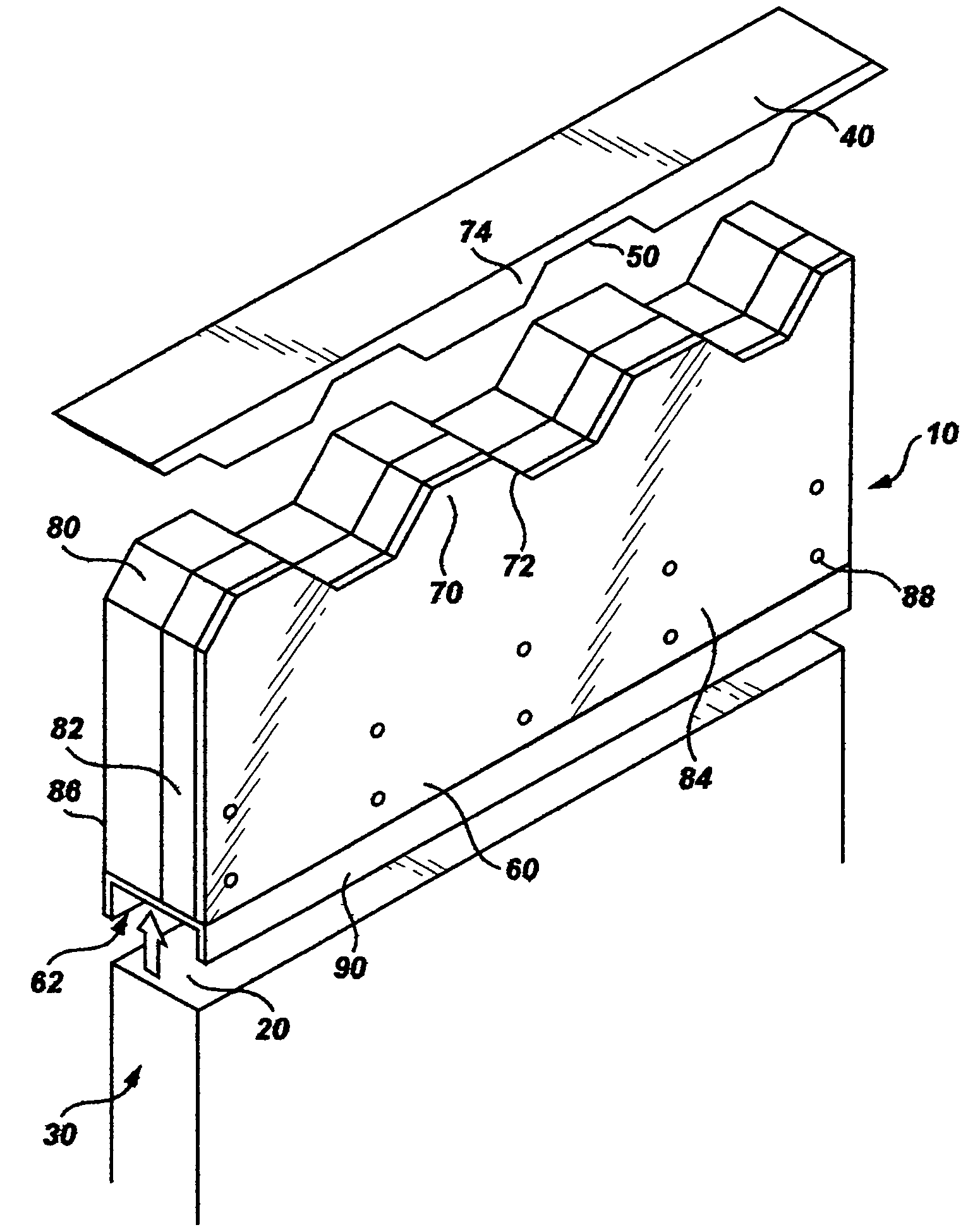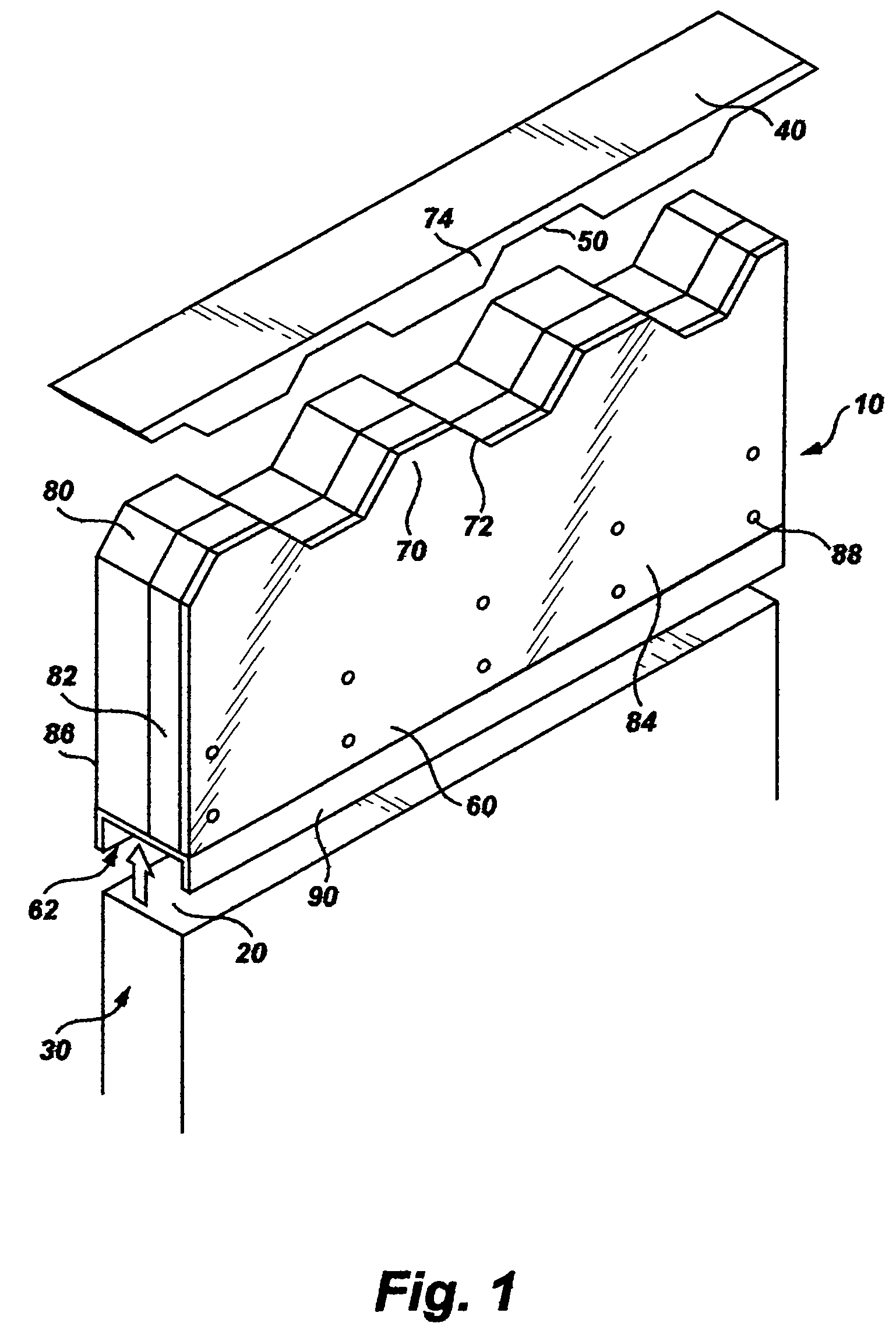Fire and sound resistant insert for a wall
a technology of inserts and walls, applied in fireproofing, walls, parkings, etc., can solve the problems of clogging the flute openings at the top of the wall, generating a considerable amount of smoke, and difficulty in making a non-load-bearing wall adequately fire and sound resistant, so as to effectively prevent both fire and sound spreading, saving time and effor
- Summary
- Abstract
- Description
- Claims
- Application Information
AI Technical Summary
Benefits of technology
Problems solved by technology
Method used
Image
Examples
Embodiment Construction
[0015]Referring to the FIGURE, it can be understood that the present invention is embodied in a means for preventing fire and noise from passing a top edge of a wall via flutes in a fluted ceiling. The means comprises an element 10 that is interposed between the top edge 20 of a wallboard 30 and a ceiling 40 having a plurality of flutes, such as flute 50, defined therein.
[0016]Element 10 includes a first end 60 which is a bottom end when the element is in use and which has a channel 62 defined therein to snugly accommodate top edge 20 of the wallboard 30 to hold element 10 securely in place on top of the wallboard. Element 10 further includes a top end 70 that is formed with a plurality of flutes, such as flute 72, that are sized and shaped to snugly accommodate lands 74 located between adjacent ceiling flutes 50 so element 10 will snugly fit between top edge 20 of the wallboard and ceiling 40 in a manner which securely seals off the ceiling areas adjacent to the flutes whereby fire...
PUM
 Login to View More
Login to View More Abstract
Description
Claims
Application Information
 Login to View More
Login to View More - R&D
- Intellectual Property
- Life Sciences
- Materials
- Tech Scout
- Unparalleled Data Quality
- Higher Quality Content
- 60% Fewer Hallucinations
Browse by: Latest US Patents, China's latest patents, Technical Efficacy Thesaurus, Application Domain, Technology Topic, Popular Technical Reports.
© 2025 PatSnap. All rights reserved.Legal|Privacy policy|Modern Slavery Act Transparency Statement|Sitemap|About US| Contact US: help@patsnap.com


